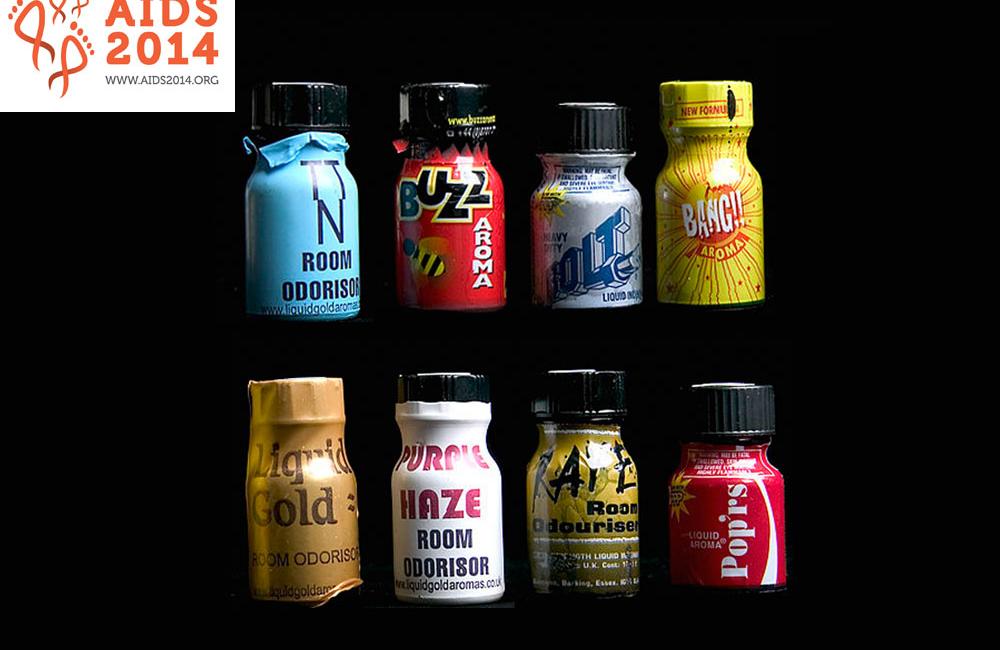
The probability of gay men in England having unprotected anal intercourse is strongly associated with the number of recreational drugs they have taken at the time, according to a study presented to the 20th International AIDS Conference (AIDS 2014) in Melbourne this week. Although the finding will confirm many people’s common sense beliefs, it has not previously been demonstrated in UK research.
Previous studies have found associations between men using drugs at least once in the past few months and men having unprotected sex at least once during that period – but have not analysed their interaction during a single event.
The data come from the Sigma Panel, a group of gay and bisexual men who took part in regular web surveys about their sexual health and HIV prevention in 2011 and 2012. On a number of occasions, the surveys asked detailed questions about the last sexual encounter that respondents had had. A total of 2142 men provided information about 6742 sexual encounters – including where it took place, what kind of relationship they had with the other man, which sexual acts were involved, how pleasurable it was, whether any drugs were used and whether the respondent felt in control of what he did.
Whereas there was a 25% probability of unprotected sex when no substances were used, this rose to 30% when one substance had been taken, 50% with three substances and a 75% probability of unprotected sex when more than five substances had been taken.
Poppers, GHB and crystal methamphetamine were the drugs most frequently associated with unprotected sex.
For this analysis, GJ Melendez-Torres of the University of Oxford also used an innovative statistical technique, called multilevel class analysis, in order to better characterise the ‘personality’ of sexual encounters.
The statistical analysis identified three distinct types of encounters. This is not a definitive description (it was in part a demonstration that the statistical process can be applied to this kind of data), but did indicate that some types of encounters are more likely than others to involve unprotected sex. The researcher said that a larger data set might provide a more nuanced description, potentially with more than three classes of encounters.
- In encounters that typically occurred with a regular, steady partner, at home, with little substance use, there was a 41% probability of unprotected sex. This class accounted for 31% of all sexual encounters.
- In sexual events that usually occurred with non-steady or anonymous partners, with little substance use, there was a much lower, 23% probability of unprotected sex. This class accounted for the majority (62%) of all encounters.
- The third class of event was distinct – it only amounted to 7% of encounters but was associated with a 53% probability of unprotected anal intercourse. It was characterised by use of multiple substances with non-steady or anonymous partners.
The results suggest there could be value in targeting interventions that help men with the last class of encounters, which only amount to a minority of sexual events but have a high probability of unprotected sex. The findings also confirm that a very large number of unprotected sex encounters occur within primary relationships, although men do not necessarily have accurate information about whether they have the same HIV status as their partner.
In general, men were less likely to have sex without a condom when they were with an anonymous partner, with a partner they had not discussed HIV status with, with a partner they knew to have a different HIV status, when they were in a cruising location, or when they were in a sex-on-premises venue. More unprotected sex happens in people’s bedrooms.
Threesomes and group sex
The data described above concerned one-to-one sexual encounters. The researchers also gathered data from 321 men about 438 encounters which involved three or more men. These were analysed separately with different statistical techniques.
For multipartner encounters, where they happened and with how many men, did not affect the probability of unprotected sex happening.
When no substances were used, there was a 29% probability of unprotected sex, rising to 41% when substances were used. There were particularly high probabilities of unprotected sex when Viagra (51%) or crystal methamphetamine (63%) were being used. Once again, the more substances that were used, the greater the likelihood of unprotected sex.
But the data do not support common sense assumptions that recreational drugs cause sexual risk taking by leading men to lose self-control or be disinhibited. As noted above, for all sexual encounters, men were asked whether they felt in control of what happened.
For all substances except crystal meth, their use was not associated with being (or not being) in control. “Null findings for control suggest that disinhibition is not a key mechanism linking substance use and UAI [unprotected anal intercourse]”, commented the researchers. Other UK research has recently found that the interaction of drug use and sexual behaviour is more complex.
However, using crystal meth at the time of sex was associated with having less control over sex (odds ratio 0.15), suggesting that this drug has a specific and unique impact on sexual behaviour.
Each sexual encounter was also rated for pleasure, on a scale of 1 to 10. The more drugs were used, and the more men were involved, the better the rating.
Melendez-Torres GJ et al. Multi-encounter analysis of substance use, situational characteristics, and typologies of sexual outcomes in single-partner sexual encounters reported by MSM in England. 20th International AIDS Conference, Melbourne, abstract WEPE298, 2014.
View the abstract on the conference website.
Melendez-Torres GJ et al. Event-level analysis of multipartner sexual encounters: situational characteristics and sexual outcomes reported by MSM in England. 20th International AIDS Conference, Melbourne, abstract WEPE123, 2014.
View the abstract on the conference website.
